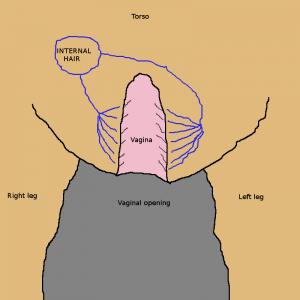Our office sees a lot of clients that require electrolysis for medical conditions. Generally speaking, insurance companies specifically exclude all electrolysis from coverage. However, there is one area where insurance companies are increasingly allowing coverage – hair removal prior to vaginoplasty and/or phalloplasty. If you have a medical need for another reason, read on.
We’ve had trans clients get approved by several insurance companies in Western New York, including Excellus, Bluecross/Blueshield, MVP, Aetna, and private underwriters through companies that provide benefits directly, like StarBucks.
Our office does not take insurance directly and, to our knowledge, the only office in the state that does, is at Mt. Sinai, but we can still help you get reimbursed if you choose to do your electrolysis here. To the insurance companies, we’re simply an out of network provider, which means that you’ll pay us, we’ll give you an invoice to submit to the insurance company, and then the insurance company will reimburse you.
Prior to having electrolysis, you’ll need to contact your insurance company’s customer service department and tell them that you’re having surgery and that you have a medical need to get the hair removed prior to surgery. The insurance company will want the same documents that you need to qualify for surgery – ie, the two letters required by WPATH guidelines, as well as a “letter of medical necessity” from your surgeon, stating that it is required. Your surgeon knows what this letter is and how to write it. We have also occasionally been asked to submit one from our side of things in addition to your surgeon’s letter, and, thus already have one prepared.
After you submit this information to your insurance company, they should give you a letter stating that you have prior authorization to get the work done. You may need to argue with your insurer some, since you do have a need which conflicts with their exclusion policies, and, at least one insurer has been steadfast in their refusal to cover pretty much anything trans related.
Once you’ve received your prior authorization, you can start coming in to get work done. Again, you pay us, we give you an invoice, and then you submit that invoice to the insurance company for reimbursement, after which, they send you a check. You need to be timely with submission of your invoices, however, or the insurance company may deny reimbursement even with prior authorization.
For people seeking medically necessary hair removal for other reasons. You have an uphill fight with your insurance company, but it’s possible that you may get similar reimbursement coverage if you are persistent enough.

